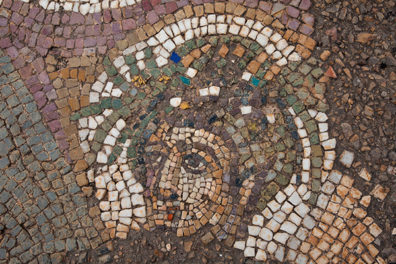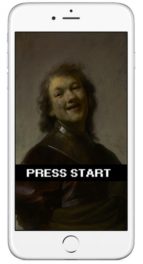The Getty Conservation Institute’s newly launched course Preserving Collections in the Age of Sustainability is training a cohort of professionals dedicated to collection preservation in both technical skills and creative problem solving. The course is part of Managing Collection Environments, a multiyear initiative that addresses compelling research questions and practical issues pertaining to the control and management of collection environments in museums. Here, project specialist Joel Taylor discusses preparations and goals for the in-person workshop phase of the course, which begins this week. —Ed.
As I wrote in my previous post at the launch of Preserving Collections, the second phase of the nine-month course is a two-week intensive workshop—a workshop that begins this week at the Pennsylvania Academy of the Fine Arts in Philadelphia (PAFA). The workshop is the centerpiece of the course, where online activities and preparations come together, and participants and instructors meet face-to-face for the first time.
One of the biggest assets in a course like this, for both instructors and participants, is the participant group, and for the Preserving Collections course we have a motivated, experienced, and insightful group that includes participants from Australia, Brazil, Canada, Ireland, Sweden, and the United States, comprising conservators, curators, and facilities managers.
These professionals will bring their perspectives and experiences from their work, and return to their institutions with the ability to apply new information, tools, and skills. By fostering an environment where people are willing to share their experiences (good and bad), instructors are able to focus the workshop on real-life experiences, rather than perfect-but-unattainable situations.
We’ve kept this inaugural class small enough to encourage participation but large enough to make a positive impact. At eighteen participants, this number allows for both small and large group discussions, which are highly beneficial for a workshop that draws from participation and structured interaction.
Before arriving, participants received outlines, technical notes, readings, and case study materials to ensure that they have common reference points from which they can engage. They also received an information-gathering assignment from their own institutions to help prepare them for what will be quite an intensive experience. During the online phase of the course, participants have been gathering information about their institutions and reflecting on their situations. This allows them to apply workshop concepts, ideas, and tools to their own contexts straight away, such as inputting their environmental data into workshop exercises.
Analysis and Synthesis
In developing the workshop, the instructors and I have tried to stay away from the traditional lecture format because of the intensive nature of the program. There is, however, a lot of material to cover, which is why we developed so many bespoke materials in advance of the workshop—materials on climatology, sustainability, the context and use of historic buildings, material responses, standards and guidelines, data gathering and analysis, risk assessment, systems theory, sustainable strategies and climate control, program briefing, stakeholder analysis, negotiation, leadership and communication strategies. This mix of topics provides up-to-date takes on familiar topics and reaches into fields that are not traditionally associated with collection preservation. Together, it equips participants from different climates and institutions to both address their issues holistically and make positive change.
The workshop is designed to move from analyzing the situation (without jumping to conclusions) to applying solutions in practice and in collaboration with colleagues. The schedule is a mix of presentations, practical sessions, and case-based activity, including group analysis of real cases, analyzing environmental data (including their own), developing system models from different information, and role-play based on real situations. Technical data, such as information about the impact of climate on materials, is an important part of what we want to convey, but how and when to use the data is just as vital. It is also a means of allowing participants to immediately contextualize and apply readings and teaching. Instructors are aware of course’s concurrent themes and each other’s sessions, so the workshop can build on what has gone before.

Front facade of McLellan House, Portland Museum of Art (left) and a screen shot of an interactive image map of the museum site (right) that leads to photographs of the location. McLellan House is one of the case studies course participants will be examining.
Our instructors are experienced practitioners with sound teaching experience. They include architects, engineers, conservators, scientists, and experts in leadership. We were very happy to be able to engage with experts in each of the fields we cover and have been working with them to develop materials created specifically for the course. The practical experience of our instructors will be important when they serve as mentors during the third stage of the course (distance mentoring); they can provide participants the kinds of support they may need when they return home and set new initiatives in motion.
Hit the Ground Running and Keep Going
The final day of the workshop is intended to serve as a springboard into the six-month distance mentoring stage where participants apply knowledge in their own institution. They will present a brief plan of action to be worked on with the mentor and implemented during the third phase of the course. The action plan they will prepare during the workshop is a blueprint for how they implement changes upon their return. This is intended to unify the different topics in a way that is meaningful to participants from different backgrounds and institutions.

Preparing for the intensive workshop with staff from Pennsylvania Academy of the Fine Arts (PAFA). At left, Ed Poletti, director of facilities management; at right, Mary McGinn, paintings conservator
Such workshops can be demanding for all concerned, but also very rewarding—subjects are really examined and connections made, both intellectually and socially, that equip participants for the future. Each workshop is different because the participant contribution is embedded in the design. Topics are not left in the air, but designed to flow into later sessions.
In an age when technology provides so many options, there has to be a real benefit to asking an international group to meet face-to-face. We’ve tried to design an experience that allows participants from different kinds of institution to hit the ground running, and keep going when the workshop is over.
My final post from the “Preserving Collections” course will be at the completion of the sixth-month distance mentoring phase, in early 2018.





Comments on this post are now closed.